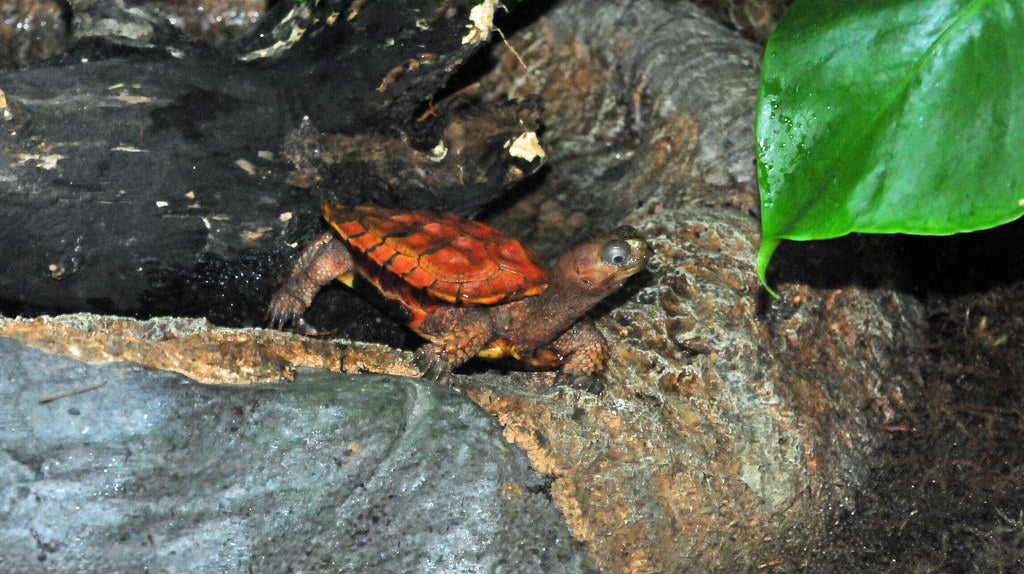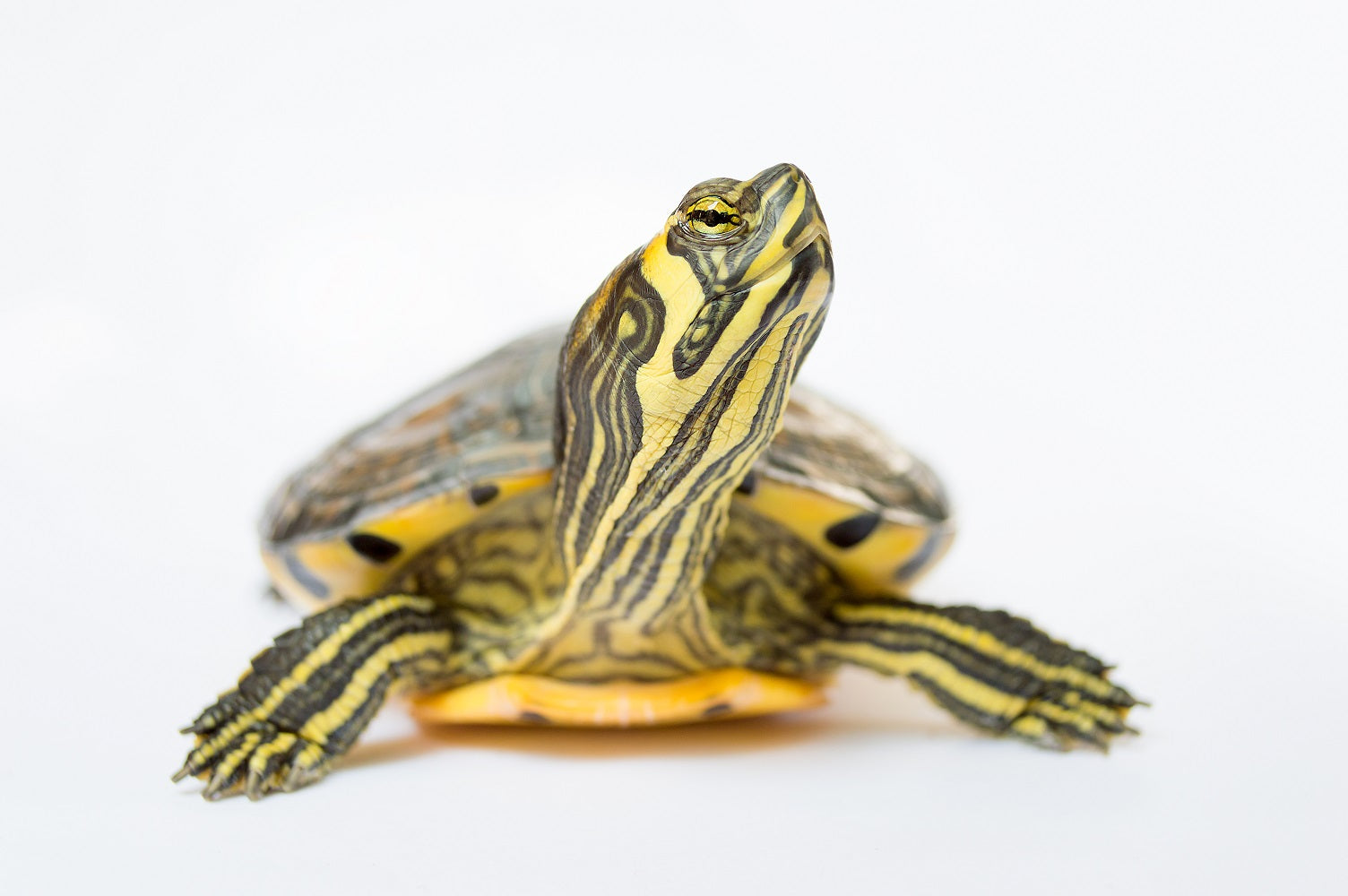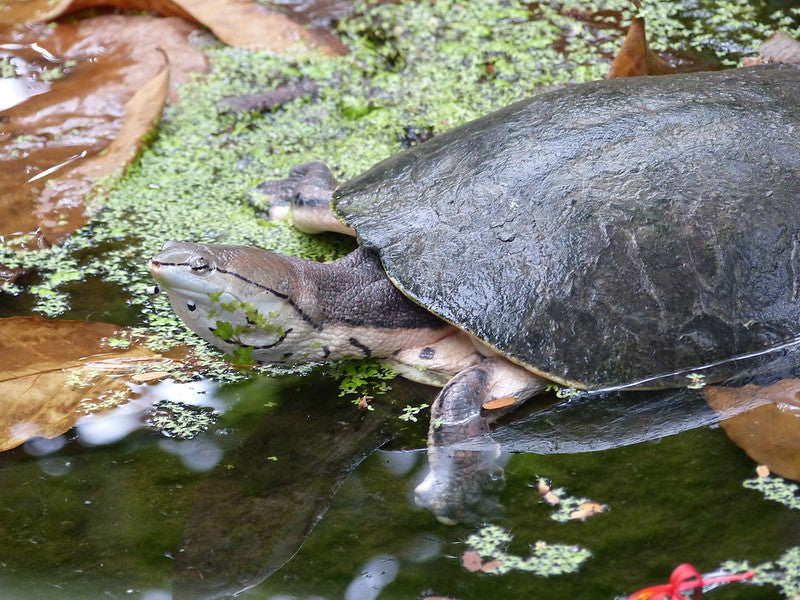Black breasted leaf turtles (Geoemyda spengleri) are small, terrestrial, diurnal reptiles native to northern Vietnam and southeastern China. They prefer high elevation wet forest habitats close to freshwater creeks and wetlands.
Black breasted leaf turtles are generally just 3-4.5” long, with females being larger than males. They have large, prominent eyes, and the shell is flattened in shape, with three ridges down its length and serrated edges. The shell is brown, with a darker head, and dark red to orange scales on the legs. Particularly noteworthy is this species’ distinctive tan to silver irises!
Black breasted leaf turtles were once quite common in the pet trade, but they are harder to find today. However, they can be housed relatively easily for a turtle, and can make good pets.
How much space do black breasted leaf turtles need?
Despite their diminutive size, the minimum enclosure size for appropriately keeping one adult black breasted leaf turtle is 36”L x 18”W x 16”H. However, this is just the minimum, and providing a larger enclosure is both beneficial and appreciated!
Due to their territorial nature, it’s best not to house black breasted leaf turtles in groups.
Do black breasted leaf turtles need UVB?
Black breasted leaf turtles require regular exposure to high-quality UVB in order to maintain optimal health and wellbeing. Providing UVB lighting to your turtle gives them all of the vitamin D that their body needs, stimulates better appetite and activity, and strengthens the immune system, as well as other benefits.
The best UVB bulbs for wood turtles are:
- Zoo Med Reptisun T5 HO 5.0
- Arcadia Forest 6%
The UVB bulb should be half the length of the enclosure and housed in a reflective fixture like the Arcadia ProT5 or Vivarium Electronics. Place the lamp close to the heat lamp. If it’s on top of a screen lid, the basking platform should be placed so the top of the turtle’s shell is 7-9” from the lamp.
UVB bulbs decay over time, so don’t forget to replace your bulb every 12 months to maintain good performance. Lights should be on for 12 hours/day or synced with your local sunrise and sunset times.
What basking temperatures do black breasted leaf turtles need?
Black breasted leaf turtles are ectotherms, which means that they rely on the variable temperatures of their environment to help regulate their metabolism and stay healthy.
Temperature gradient for black breasted leaf turtles:
- Basking area (air temp) — 85-90°F
- Ambient temperature — 68-80°F
- Nighttime temperature — 60-72°F
Measure basking temperature with a digital probe thermometer, with the probe placed on the basking surface.
A good way to warm the basking area is with a 40-60w incandescent heat bulb placed on one side of the enclosure and positioned over the basking surface. Heating should be turned off at night. Do not use ceramic heat emitters (CHEs), red bulbs, or blue bulbs, as these are not as effective. Increase the wattage if they’re too cool, and use a plug-in lamp dimmer if they’re too warm.
What humidity levels do black breasted leaf turtles need?
Black breasted leaf turtles should have an average humidity of 60-80%. As a forest species, they need consistently high humidity in their environment to stay healthy. Humidity should be measured by a digital probe hygrometer with the probe in the middle of the terrarium.
To help maintain high humidity levels, mist your enclosure 2x/day with a pressure sprayer and use a thick layer of humidity-retentive substrate with leaf litter. It’s also a good idea to provide a humid hideout lined with moistened substrate or sphagnum moss and placed in the middle to cool end of the enclosure.
Although black breasted leaf turtles spend less time in the water than most other turtles, it’s still beneficial to provide a shallow tray of water for soaking. This will also function as the turtle’s water dish, so make sure to always keep it clean and fresh!
What substrate is good for black breasted leaf turtles?
Substrate is important for providing a burrowing medium for your turtle, as well as helping maintain appropriate humidity levels. Use a deep layer of moist, organic-rich soil for this area. You can do this with Zoo Med Reptisoil or by mixing your own substrate with approximately 60% clean topsoil and 40% coconut fiber (measured by volume).
Leaf litter and sphagnum moss make good additions on top.
What décor can you use in a black breasted leaf turtle enclosure?
There are many ways you can increase your enclosure’s functionality for your pet, as well as its general attractiveness! Here are some ideas:
- live/artificial plants
- driftwood
- hollow logs
- cork flats
- terracotta pots
Black breasted leaf turtles are fairly capable climbers, and should be given ample opportunity to do so safely.
What do black breasted leaf turtles eat?
Black breasted leaf turtles are primarily carnivorous, which means that they eat primarily animal matter, although they are known to eat a small amount of fruit as well. For best health, young and growing turtles should be fed exclusively on animal matter, but adults can be offered small amounts of fruit with their meals. Food should be offered daily, and note that live prey is preferred to pre-killed prey.
Protein sources for black breasted leaf turtles: dubias, discoids, earthworms, mealworms, snails, crickets, hornworms, silkworms, black soldier fly larvae, darkling beetles, pinky mice, quail chicks
Fruits for black breasted leaf turtles: cherries, strawberries, raspberries, plums, watermelon, tomatoes, bananas
Supplements
You will also need calcium and vitamin supplements to prevent your turtle from developing a potential deficiency. We recommend Repashy Calcium Plus LoD, lightly dusted on all feeder insects.
Do black breasted leaf turtles like to be handled?
Black breasted leaf turtles are not particularly handleable, so it’s best to stay hands-off with this species. If you would like to interact with your pet, try hand-feeding them with a pair of soft-tipped feeding tongs.
*This care sheet contains only very basic information. Although it’s a good introduction, please do further research with high-quality sources to obtain additional information on caring for this species.
"Black-breasted leaf turtle (Geoemyda spengleri)" by warriorwoman531 is licensed under CC BY-ND 2.0.




Leave a comment
This site is protected by hCaptcha and the hCaptcha Privacy Policy and Terms of Service apply.